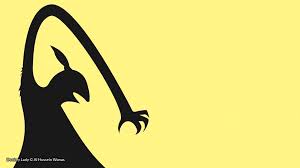
when Horror Yearbook – Qatar has long been a land where tradition, hardship, and storytelling intertwine. Centuries ago, before the discovery of oil and gas, communities in Doha and Al Bidda thrived on pearl diving and trade routes. Life was defined by the harsh desert climate, long voyages at sea, and the uncertainty of survival. Families endured separation, with men setting sail for months while women maintained homes and children under extreme conditions. These realities shaped folklore, passed orally through prose and poetry. Among the most chilling tales that survived across generations are Bu Draeyah, the feared sea monster, and Um Homar, the donkey lady. Both stories originated in the Arabian Gulf but became deeply rooted in Qatar’s cultural memory. Their legacy reveals not only fear but lessons on resilience, caution, and the unpredictable nature of life in the desert and at sea.
Sailors of Qatar once dreaded the sound of cries piercing the still night air while resting after long hours of pearl diving. Out at sea, fatigue gave way to terror when an urgent call for help echoed across the waves. Believing a crewmate was drowning, divers leapt into the water only to meet Bu Draeyah, the Father of the Seas. Legends describe this monstrous creature as able to control the winds and summon waves. In some versions, Bu Draeyah boarded ships at night, killing those who looked at him. In others, he inflicted incurable illnesses such as nausea and hallucinations. Survivors of an encounter were considered bad luck, often forced to hide their stories even from family. In Qatar, these myths underscored the dangers of the sea, reminding seafarers that peril lurked not only in storms but also in the unseen and the unknown.
“Read about: Spine-Chilling Tales of Leak in Bali: Where Myth Meets Reality”
Children in Qatar once grew up with the terrifying warnings of Um Homar, a half-woman, half-donkey creature. Known as Homarat Al-Guyla, her legend placed her at the heart of childhood fears during midday hours. Parents cautioned their kids to remain indoors when the sun was at its peak, for this was the donkey lady’s time to prowl. Wearing black and marked by the sound of clattering hooves, she sought out children to lure and devour. The story describes her as cunning, knocking on doors while parents napped after work. Pretending to need food or water, she tricked children into opening doors. If refused, she banged loudly, filling homes with dread. In some retellings, she climbed walls as a lizard or appeared with three black dogs. In Qatar, this myth acted as both a scare tactic and a moral lesson, teaching obedience, caution, and the importance of respecting elders’ warnings.
“Read more: Underdogs Rise: Bolivia Crushes Brazil and Books Place in World Cup 2026 Playoff”
These tales of Bu Draeyah and Um Homar highlight more than supernatural fear; they reflect the challenges of desert and maritime life in Qatar. Ancestors lived in constant struggle against unpredictable environments where one mistake could mean death. Folktales served as moral compasses, teaching children to avoid strangers, to heed warnings, and to remain within the safety of community. They stressed that survival depended on routine, familiarity, and tribe. Life was fragile, and these myths reinforced how quickly fate could change. By dramatizing the dangers of sea voyages or the risks of wandering outside at noon, Qatar’s folklore instilled discipline and awareness. Such lessons, though wrapped in frightening imagery, ensured the younger generation learned caution early. The storytelling tradition itself became an anchor of resilience, binding families and communities through shared narratives of danger and endurance.
The oral nature of Qatar’s history has made these stories both vulnerable and enduring. With globalization and digital distractions, many traditional folktales risk fading away. However, Bu Draeyah and Um Homar continue to surface in modern adaptations. Some stories have been translated into English, while others have been adapted into short films, comics, and creative retellings. In contemporary remakes, Um Homar appears on highways tricking teenagers, blending tradition with modern fears. Artists and writers in Qatar actively document and reinterpret these tales, ensuring younger generations remain connected to their cultural roots. Despite modernization, the haunting figures of the sea monster and the donkey lady persist as symbols of shared memory. Their survival demonstrates the resilience of Qatar’s folklore, proof that even in an age of technology, the voices of ancestors still echo.
This article is sourced from folklorethursday.com and for more details you can read at horroryearbook
Writer: Sarah Azhari
Editor: Anisa